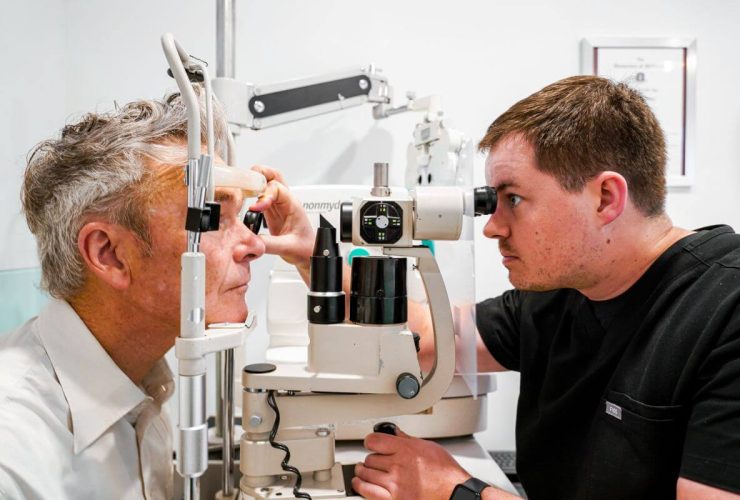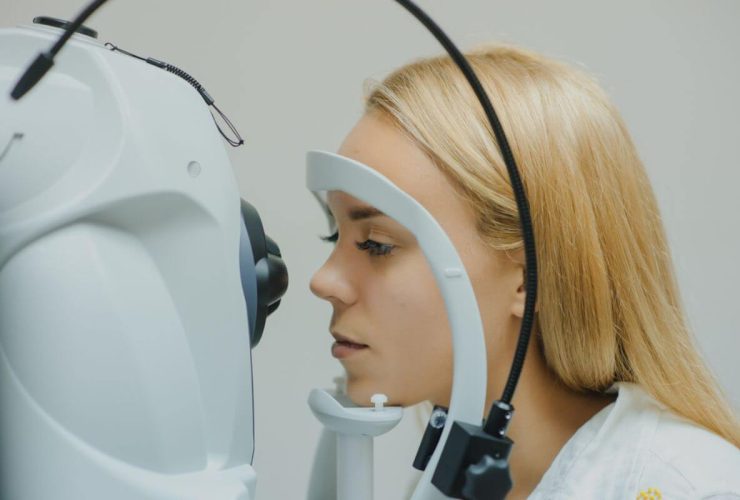Back-to-School Eye Care Checklist for Kids and Teens
As the anticipation of a new school year mounts, parents turn their attention to uniforms, stationery, and schedules. However, one of the most critical things that is often neglected is eye care for kids. As we know, children and teens are spending more time on screens both in and outside the classroom, making it especially important to prioritise children’s eye health. This checklist will guide you through every essential step to prepare your child’s vision for the new school term, including scheduling an eye check.
Tips for Eye Care for Kids and Teens
Taking proactive steps and caring for kids’ eye health can help prevent minor eye health issues from developing into serious problems. This checklist details practical tips for parents to help children maintain eye health:
1. Schedule a Comprehensive Student Eye Check-Up
Scheduling a comprehensive student eye check-up is the primary step in taking care of kids’ eyes. School vision screening is worthwhile for checking how well a child sees distant objects and for detecting eye health problems. However, they miss many subtle problems.
- Book your child’s student eye exam during the summer before the back-to-school rush and the following annual exams at the same time each year.
- Ensure that the exam includes tests for visual acuity, eye tracking, focusing, and eye health.
- Ensure that your optometrist knows your family history of eye and vision conditions so they can proactively help you identify risk factors.
2. Recognise Early Signs of Vision Problems
It is important to remember that children do not know about the signs of eye problems. Being attentive to the signs and symptoms is an important aspect of your child’s eye health and ultimately can lead to long-term problems. Check if they are:
- Squinting, rubbing their eyes a lot, and complaining of headaches and tired eyes.
- If your child is holding their books very close, sitting too close to the TV, or having to strain their eyes to see the board while in the classroom, then they may be experiencing eye strain.
- Reading problems, lack of hand-eye coordination, and excessive blinking during reading.
3. Encourage Healthy Habits for Children’s Eye Health
Daily habits have a significant impact on your children’s eye health. By incorporating healthy habits and routines at home, you will promote good eyesight for your children.
- Ensure your children enjoy a balanced diet, including plenty of leafy green and colourful vegetables, eggs and oily fish to provide essential nutrients like vitamin A and omega-3 fatty acids.
- Encourage your child to drink plenty of water throughout the day to keep their eyes hydrated.
- Maintain sleep patterns, as resting is important for the recovery of their eyes as well as for their health.
- Teach your children to avoid rubbing their eyes and to wash their hands frequently to keep infections away!
4. Limit Screen Time and Promote Outdoor Activities
As digital devices are becoming a bigger part of both education and recreation, the management of screen time is important for good eye care for kids.
- Develop and enforce limits on how much recreational screen time is acceptable on a daily basis, with a target of only 1-2 hours maximum after the obligations of schoolwork.
- Teach your child the 20-20-20 rule. Every 20 minutes, remind them to look at something at least 20 feet away for at least 20 seconds.
- Encourage outdoor play and activities – research has shown this behaviour can limit nearsightedness and support physical health.
5. Use Protective Eyewear and Safe Practices
Sports and physical activity are important for the development of kids, but they can also pose a risk to children’s eye health. Protecting your child’s eyes is an important part of eye health and should be included in every back-to-school checklist.
- Make sure your child wears sports goggles or other protective eyewear for physical education classes and other extracurricular activities.
- Provide young children with safer toys and non-sharp objects to prevent accidents.
- Provide sunglasses with UV protection for outdoor activities to protect the eyes from harmful rays.
6. Monitor and Maintain Corrective Lenses
For children who already have glasses or contact lenses, proper care and routine schedules are important for effective eye care for kids.
- Schedule regular visits to update prescriptions as they grow.
- Teach cleaning and storing glasses or contact lenses properly.
- Replace broken frames or frames that do not fit correctly as soon as possible to ensure comfort and efficacy.
Ready for a Clear Start? Book Your Child’s Eye Exam Today!
Making eye care a priority for kids is one of the best ways to help your child strive academically or personally. Children’s eye health depends on a combination of things; everything you do matters, from regular students’ eye check-ups to healthy habits every single day. Never wait for problems to arise; proactive care is the best way to ensure a child sees their world clearly and confidently.
Book your child’s back-to-school eye exam with Robin Hall Opticians today to give them the vision they need for a successful year!




